#Animal Fact
Text
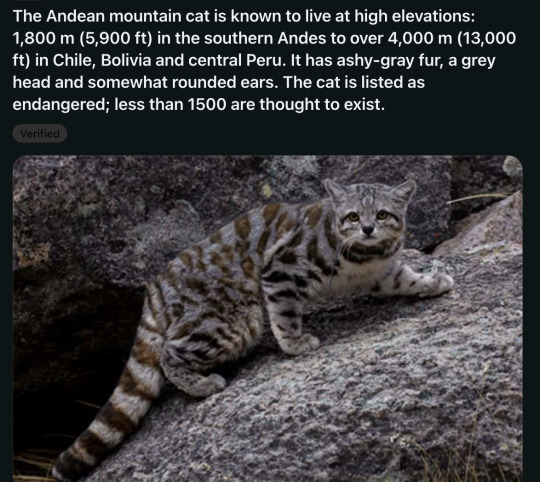
3K notes
·
View notes
Note
Hi! Any cool facts about orcas
Hello my friend! Of course!
The name killer whale derives from their original name ‘whale killers’ given to them by sailors who saw them hunting whales. Over time, the name eventually switched around. The name ‘orca‘ comes from their Latin species name Orcinus orca, where orcinus translates to mean ‘Kingdom of the dead’.
Since moose dive up to 6 meters (~20 ft) to find aquatic vegetation to eat, Orcas have become one of their natural predators.
While their name suggests that they come from the whale family, they are actually the largest of the dolphin family. The real question however, is do they share the same freakish behaviors some dolphins exhibit?
#asks#answered#anonymous#orca#orcas#orca whale#orca whales#killer whale#killer whales#dolphin#dolphins#animal#animals#animal fact#animal facts#fun animal fact#fun animal facts#fact#facts#fun fact#fun facts#zoology
137 notes
·
View notes
Note
10 facts about cookie cutter sharks :D
DYK… (part 3??)

cookiecutter sharks are named for the way it cuts a wound in whales, dolphins, seals and large fish. It grips the sides of its prey with fierce jaws and gouges out a circular, cookie-shaped piece of flesh.
cookiecutter sharks lose several sets of teeth throughout their lifetimes. this process ensures that they always have sharp, healthy teeth capable of feeding by their preferred strategy. unlike other species, though, cookiecutter sharks apparently purposely swallow the teeth that they lose.
cookiecutter sharks have an elongated, cigar-shaped body with a short, bulbously rounded snout. the large, oval, green eyes are placed forward on the head, enough to allow the shark to have binocular vision.
cookiecutter sharks are slow swimmers. using vertical migration, these sharks will migrate to the surface at night in order to hunt prey. during the day the sharks will return back to the deep ocean in order to escape predators.
In march 2009, maui resident Mike Spalding was bitten by a cookie cutter shark while swimming across Alenuihaha Channel.
cookiecutter sharks are thought to use the bioluminescent photophores on their belly for counterillumination. counterillumination is like camouflage for these sharks: the light they emit blends in well with the slightly lighter water above them, so an animal looking up at them can't see them very well.
cookiecutter sharks are also called cigar sharks!!
The International Union for Conservation of Nature has listed the cookiecutter shark under least concern, as it is widely distributed, has no commercial value, and is not particularly susceptible to fisheries.
#sea creatures#marine biology#ocean#aquatic#sealife#sea#shark#sharks#marine life#water#cookie cutter#cookie cutter shark#shark fact#baking shark#interesting facts#fun facts#the fact site#random facts#animal facts#today i learned#nature#animal#animals#sea facts#shark facts#water fact#water facts#animal fact#fun fact#i like sharks (and getou’s balls)
19 notes
·
View notes
Text
Creature 95
Blufire jellyfish

The bluefire jellyfish (or simply the blue jellyfish) is found in salt water bodies in Europe. Usually closer to the shore since that’s where the abundance of plankton is. It is known for its bright blue (sometimes yellow) bell. Bluefire jellyfish live for less than a year.
fact source: wikipedia
image source: wikimedia commons
40 notes
·
View notes
Text
Leafy sea-dragon

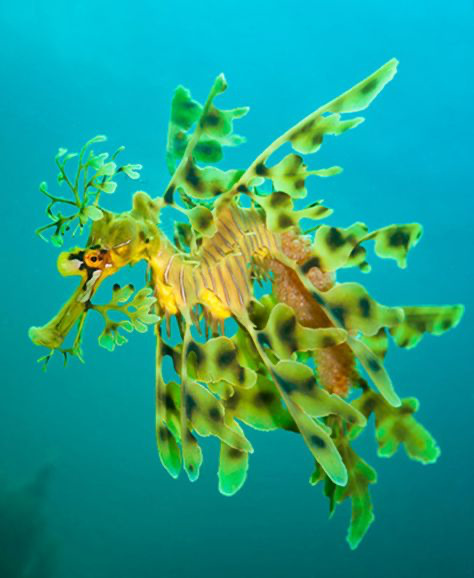


The leafy sea dragon (Phycodurus eques) is a visually stunning marine creature found in southern and western Australia. It camouflages among seaweed and kelp with leaf-like protrusions. Slow-moving and carnivorous, it feeds on small crustaceans. Males carry eggs in a brood pouch until they hatch. Protected under Australian law, they face threats from habitat destruction and collection. These unique creatures are important indicators of coastal ecosystem health. These silly creatures come in all kind of colours and shapes!
16 notes
·
View notes
Note
bats are the freaking cutest! could you tell me something about them? 🦇💞
ABSOLUTELY HOLY SHIT
oh my god you have no idea we just started talking about bats recently in my advanced class!!

so aside from rodents bats contain the most species of mammals they have around 20% of all mammals in their family the Chiroptera (over 1000 species!!) and they're all pretty diverse!!
and I mean SUPER diverse these are one of the groups that people are still finding new species in- prepare for a LONG post this first one as an overview of bats and the next over some specific species I think are neat
OK so they are distributed worldwide (except Antarctica) and obviously have some pretty big adaptations around flight
right now there's some debate going on about classification because of their adaptations- mainly based around echolocation, I'll get into that a little more later on- but the old classification system was the mega bats (megachiroptera), which was only one subgroup, and the micro bats (microchiroptera). The genetics are still iffy and to this day its still a little confusing where everybody belongs but that old way has since been thrown out the window... but still likes to watch what's going on inside if you know what I mean (I don't know what I mean....)
but anyway! this was based also around their distribution so we have what are called old world mammals which are critters found mainly in Africa, Asia, and Australia but also Europe (hence the name old world) and new world which is the Americas. Mega bats were considered new world and only held one family which is no longer the case
anyway!
we don't actually know how we got bats
well we do but we dont... let me explain!
the earliest known bat fossil was a Eocene bat found in germany (I think?) from 52.5 Mya also called Icaronycteris gunnelli and it was pretty much already a bat here's a picture

so... we don't know what it looked like before it looked like a bat! we hypothesize that it was another shrew-like mammal that just transitioned to flying really quickly. after all- that's a big commitment if you want to catch flying prey!
flying also takes up a lot of energy so they have to be tiny (except for flying foxes but I'll talk about them later) they lose heat/energy really fast so that means they need to eat a lot of high value food this leads to nearly all bats being insectovores with a few notable outliers
remember bats are super diverse there's specialization in every way you can think! the only things they won't eat are leafy greens- even the herbivores require high sugar diets and they are too small to have specialized stomachs like other plant adapted mammals.
because these guys require high energy food they also love to stay in tropical climates which is where they are the most diverse- you'll find a whole lot of bats in South Asia and South America.
so let's talk about bats as a whole now that we have some background.
Chiroptera- (literally means: hand wing)
so bat wings. they are more maneuverable than a birds wing and will encase the whole arm and in-between the fingers. they have a super duper adjustable membrane that they can move around in really subtle ways to help them navigate in the dark. their radius/ulna bones (forarm bones) are somewhat fused together and their 1st and 2nd finger acts as that final support beam for the rest of their fingers. they also have a thumb with a claw that sticks out.
their torsos are also adjusted for flight they have a super broad chest with small hips and straight long legs. their claws are independent (not fused like their wings) and they sometimes have a spur off of their ankles to help support the membrane between their legs
some of them have tails some of them do not- when they do have tails the membrane will also be connected to that at the middle.
their shoulder girdle is also special they have a long clavicle a large/strong scalpula and a ridged sternum which makes their center of gravity over their shoulders- this is really important for momma bats! they can only have one young (pup) at a time and they must stay up pretty high on her chest when drinking milk so that she can still fly. that means her nipples are real high up too (eventually she will leave the kid behind and go hunt on her own to bring back food)
here's a few modern bat skeletons
(note the ankle spur on the left image)

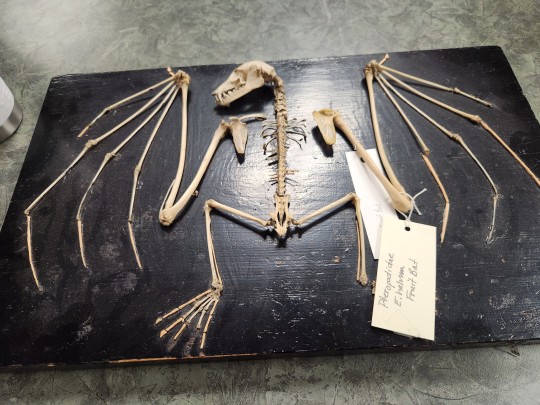
ft. my phone in the glass reflection... my bad dog
and check out those Itty bitty hips! imagine how small those babies have to be at birth to fit through that! haha just kidding you don't have to imagine here's a baby bat
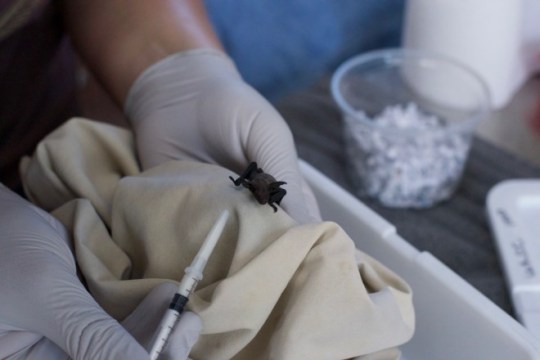
SO small (this is a species called Myotis lucifugus the common name is literally "little brown bat")
OK so flight-
I don't know much about aerodynamics so this is gonna be like a weird bullshit explanation on this
so bats have curved wings for lift and they get thrust from their muscles on their body- they can adjust the curvature of their wings which is called the camber (if I remember correctly idfk honestly) and the front edge of their wing will change their angle of attack. they also adjust their fingers for the same deal bpa bla bla you get the point they can move their wings like crazy
so a high camble or angle of attack means a higher lift. they have super tiny thin muscles under their wing membrane that will also adjust its kinda like when horses twitch their skin to get a fly off.
wing beat cycle- upbeat brings the wing in and downbeat spreads the wing. they get their main power from their chest during the up beat and have less power from their back muscles on the down beat
a lot of them also have like a locking mechanism in their shoulder that keeps their wings from like snapping back open from the wind resistance
variability in wing size is also crazy- so long thin wings = longer flight
their tails are also like rudders and help with lift free tail bats struggle with this especially and will roost super high up and just kinda fall into flight
heavy prey like fruit requires heavy lift and that means their uroptagium (membrane between the legs) needs to be specialized for their habits
some bats use their membrane as like a net to catch moths and other flying bugs and throw them to their mouths very few bats will actually pluck things from the sky with their mouth they use their hind legs 99% of the time
(bat wing anatomy)

notice those tail variations
ears.
ears on a bat are fucking crazy there's all kinds of different variations (there's that word again) but one main trait is an extended tragus which is used to deflect sound here's a picture of a few examples

aww Lil cuties
they also have a nose leaf which we think also deflects sound (or heat in some species) both are necessary for echolocation here's some nose leafs

so while we are up here at a bats head we can talk about their skulls for a second and I'll get back to echolocation in a second
so bat skulls are similar to dogs but they may have modifications in their nasal areas and their incisors and premaxilla specifically. this again.... is super diverse and hard to kinda group together but here's a few examples

they all generally have primative molars which is called dilambodont molars its kinda a W shape with their crests but some have some crazy teeth like vampire bats some may not have any front teeth at all! they might use their hard pallet as a grinding surface like echidnas do
again... please don't ask me about teeth this is really all I know they stress me out
their relative size is also crazy variable flying foxes are the largest and can have 4-5ft wingspans and be around 2kg while bumblebee bats stay around 2g some of those larger guys can hibernate and a couple of super social ones do too
so!! elephant in the room- echolocation.
this special feat requires good ears and a good larynx
sound is produced in the larynx and comes out the mouth or though the nasal cavities this is just anatomy but in bats their nose leaf will also direct high frequencies away from themselves
remember a high frequency means a short wave length so to detect distances they need two mobile ears on their head to figure out the direction of the sounds. these move and listen somewhat independently from each other
bats are also creative with their echolocation they use a lower call when flying around to make sure they don't run into anything and a higher and faster call when they have located prey- think of it like a sonar on a submarine. the lower call sweeps the area for something to bounce back against and when something moves around like a pretty little moth for example, they will hone in on that sound to make sure they hit their target. and as we remember, high frequency requires a shorter distance from their target.
now I want to break some misconceptions real quick- no bat is blind. some bats have very small eyes and they likely don't rely on their vision but they can all see! bats are also loud! not in frequencies we can hear them but they are basically shouting all night long. echolocation also doesn't present a map of the land like some cartoons may show- again, imagine a sonar from a submarine its pretty similar but we don't actually fully understand how it's processed in their brains- we aren't bats after all!
this echolocation thing is super precise they, can tell the shape, speed, texture, size, type, orientation, and distance of something from a single call and they can go up to 200KHz
hearing the bounced back auditory waves requires a specialized auditory bullae which is shown in this photo circled in red

so these suckers are not fully attached to the skull and are instead supported by muscles so that they won't deafen themselves with their own yelling. they will relax that muscle when yelling and retract it to listen
this is so precise that they can identify and avoid a .2mm wide wire from a full meter away and can detect a fruit fly from 1/3rd of a meter away
if a bat had their way they could catch prey every 7 seconds (and catch a fruit fly every 3 seconds)
alright I'm gonna leave it here as my overview on bats and next time I'll get into some specific species and the differences between yin and yang bats :)
I hope this post was interesting to you and I hope you learned something! please feel free to ask me anything else thank you for your question!
I've also maxed out on both images AND tags for this post so I'm likely going to try and split up these bigger posts more often
OH before I forget (and I'll do a post on bat conservation too) just a firm reminder DO. NOT. TOUCH. BATS.
they are cute! they are excellent bug catchers! we love them! BUT they are also carriers of lots of diseases that humans can get such as rabies, ebola, and yes covid-19 not only that they are also ILLEGAL to touch
if you see a hurt bat or if one gets stuck in your garage or something call animal control they will send out a LICENSED Profesional to handle it for you
here's some information on the federal laws surrounding bats but always check your state laws as well!
DO.
NOT.
TOUCH.
BATS.
OK that's all thank you :)
#bat#bats#halloween?#bat facts#animal facts#zoology#mammalogy#special interest#animals#biology#bones#animal#mammals#mammal facts#chiroptera#bat fact#echolocation#zoology major#animal facts with mj#animal fact#tune in next time for MORE bat facts#im sorry this took so long#this is also a super long post my bad dog#🦇#bats 🦇#🦇.txt#idk what those tags are i didnt know you chouod put emojis in tags i feel so old#im sorry for typos#i am dyslexic#pointing out my typos is dyslexia-phobic /j
12 notes
·
View notes
Text

73 notes
·
View notes
Text
For the July 5th Wet Beast Wednesday I was going to do a 4th of July special where I would cover the "state" fish of Washington DC, the American shad. Unfortunately, the American shad is not a very interesting fish so instead I'm covering the amphiuma. It still kind of counts because they're endemic to the southeastern United States. Amphiumas are salamanders belonging to the genus of the same name. There are three extant species, the three-toed, two-toed, and one-toed amphiuma. Common nicknames for them include conger eels and Congo snakes, both of which are incorrect as they are not snakes, not eels, and not from the Congo. They are notable for their serpentine appearance and almost entirely aquatic lifestyles.

(image: a two-toed amphiuma)
Amphiumas have a very elongated, eel-like body plan. Their limbs are extremely reduced, but have not been fully lost and species can be identified by the number of toes. They live almost their entire lives underwater, though they have been seen crawling out onto land during wet weather such as rainstorms. As many live in seasonal wetlands or other places that can dry out, they have developed the ability to aestivate, a form of hibernation that happens during the summer and conserves moisture. They also secrete a thick and slippery coating of mucus that serves a number of purposes including protection of the skin, keeping the skin wet, and helping escape from predators. Amphiumas can get very large for salamanders, especially the three-toed and two-toed species, which can reach over a meter in length each. The two-toed amphiuma is the longest salamander in North America, though the hellbender still takes the record for the largest. They are primarily carnivores, feeding on small fish, snakes, turtles, amphibians, the occasional mammal, aquatic invertebrates, and occasionally plants. They seem to have a particular taste for crayfish. Interestingly, they have been seen passing up smaller crayfish to focus on larger ones, indicating they can determine when prey will be too insubstantial to be worth the effort of eating it. They can communicate with each other using clicking sounds that are only made in the presence of others.

(image: am amphiuma looking adorable)
They retain a number of juvenile traits including a lateral line. This is an organ system found in fish and amphibians that detects movement of the water and changes in water pressure. Most salamanders only have a lateral line as larvae, but the almost-fully aquatic lifestyle of the amphiuma has led to it retaining the lateral line into adulthood. Unlike some other aquatic salamanders, including the siren, axolotl, and olm, amphiumas do not retain external gills as adults, though they do retain gill arches. While they can respirate through their skin, the amount of oxygen obtained in this manner is not sufficient to keep the amphiuma alive. Amphiumas have extremely large lungs that take up about half of their body length. The group has a unique respiration cycle in which they have to exhale twice to fully empty their lungs and use a combination of mouth and nostril pressurization and smooth muscle groups in the lungs to breathe.

(image: an amphiuma with its mouth open)
Male amphiumas are usually longer and have larger heads than females. While traits like this often indicate male-to-male competition for mates, this has not been observed in amphiumas. In addition, some populations do not have this type of sexual dimorphism. Females are typically the ones to court males. Pair will coil their bodies around each other until their cloacas line up. The male will then transfer a sperm packet into the female's cloaca. Females will pick a secluded area to lay their eggs, up to 200 at a time, in a long strand. The female will coil around her eggs to protect them until they hatch. Females generally mate every other year.

(image: somebody holding an amphiuma)
Amphiumas are not dangerous to humans, though they can deliver a painful bite if disturbed. None of the species are endangered, though the one-toed amphiuma is considered near-threatened and is the leas understood of the species.
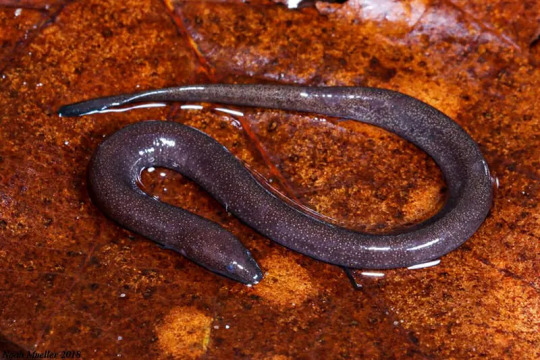
(image: a one-toed amphiuma)
#wet beast wednesday#biology#zoology#ecology#aquatic biology#amphiuma#salamander#animal fact#slimy boi
15 notes
·
View notes
Text

I give this one 9 lives outta 10 🐅🐈⬛
#cat#cats#cat meme#cat memes#cat fact#cat facts#tiger#tigers#animal fact#animal facts#animal memes#animal meme
40 notes
·
View notes
Text
i hope everybody knows about marsh shrews, aka jesus shrews, because they're named that because their fur is so fluffy they're buoyant enough to run on water
#Shrews#Animal fact#Mine#ok to rb#The fact theyre called jesus shrews gets me#Our lord in insectiviourous heaven
98 notes
·
View notes
Text
BOTD: Peaceful Dove
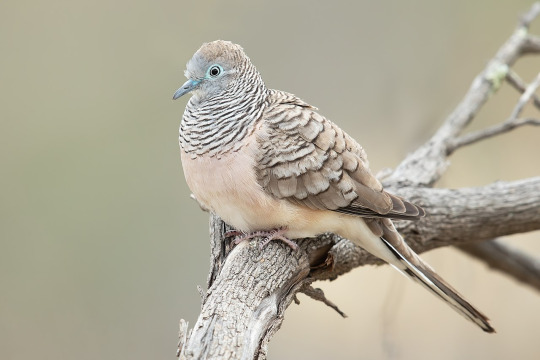
^Image credit: JJ Harrison, Wikipedia
Peaceful Dove (Geopelia placida)
Peaceful Doves are relatively small pigeons that feed on the ground in places such as paddocks, beside roads, and in gardens. They are closely related to the Zebra Dove and the Barred Dove, and up until recently they were classed as a single species.
#peaceful dove#geopelia placida#tropical birds#doves#dove#pigeons#pigeon#pigeons and doves#birdwatching#bird of the day#bird fact of the day#bird fact#bird facts#animal facts#animal fact#ornithology#birds#bird#birding#bird lovers
56 notes
·
View notes
Text
Oarfish
Oarfish lack scales. Unlike many bony fish, oarfish lack scales. Instead, they have tubercules and a silvery coat of a material called ganoine. Although they are adapted to survive under high pressure, at the surface their skin is soft and easily damaged.
#oarfish#fish#animal#animals#animal fact#animal facts#fun animal fact#fun animal facts#fun fact#fun facts#fact#facts#zoology#marine life
289 notes
·
View notes
Text
Just learned that the plural form of mongoose is mongooses and not mongeese, the course of my life has been changed for the worse.
3 notes
·
View notes
Text
creature 100
Siamese fighting fish

Siamese fighting fish, better known as betta fish, are one of the most popular home aquarium fish out there. They are native to freshwaters in Southeast Asia, and were originally bred for fighting (like dogfights but with fish). Betta are extremely hardy fish, and can survive low oxygen levels and bad water quality thanks to an almost lung like organ that lets them breathe air if they have to.
fact source: wikipedia
image source: fishkeeping wisdom
#creature 99#betta fish#home aquarium fish#siamese fighting fish#fish#fish facts#hey cool! 100 creature posts!#creature post#animal fact#animal facts
11 notes
·
View notes
Text
dunno if anyone's mentioned this but cats actually do get 'beards' like this in real life


it occurs in unneutered male cats
10 notes
·
View notes
